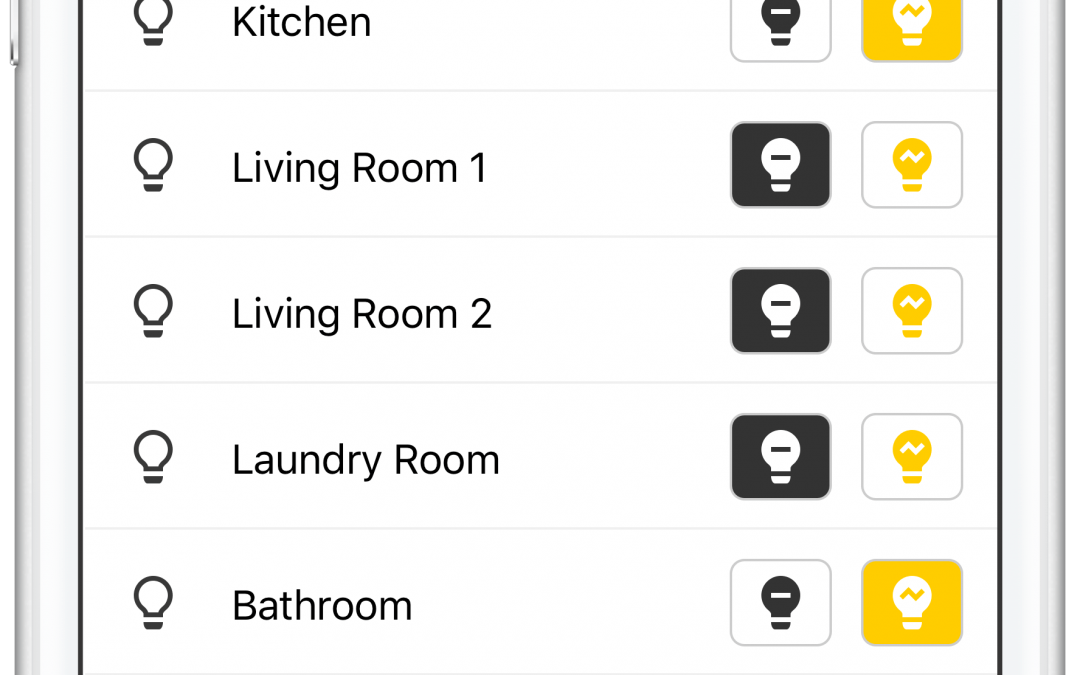There are many ways to make a home “Smart.” Lighting tops the list as one of the most effective ways to not only make your home appear “Smart,” but also has the potential to save energy and increase security. There are many ways that lighting can be integrated into the Smart blueprint of your home. In this article I will cover a few of them. However, remember that this only scratches the surface. Everyone lives in their homes differently, which means the options are endless.
The evolution of Smart lighting
In the many years that I have installed and programmed lighting control systems, I have learned one valuable lesson. That is that people will not agree on what makes sense for them and their families. In the past, the cost of a lighting control system prohibited most people from being able to take advantage of this awesome feature. But that has changed!
In the past, lighting system manufacturers trained the installers on how to implement and program these systems according to their vision. The installers then set up systems accordingly and users lived with it.
Now that smart lighting has been introduced to the mainstream, the original concept of scene logic has been broken. Systems are now customized for the customer and how they live. Because of that, I have found it is best to implement smart lighting in phases in order to not overwhelm users with the endless possibilities.
Convenience is a primary feature of Smart lighting
For those of you who do a lot of entertaining, Smart lighting is your best friend. Think about setting the right mood by having dimmers in lieu of on/off switches. You set up your entertainment scene and recall it at the times you are having parties. When the party is over, you push a single button to turn off all the lights. You no longer have to walk around the house and turn off each and every light. Sure, this is the way it has been done for years. But, how many times did you wake up the next day and realize you forgot to turn off a lamp, or the lights in the basement?
Another great use for Smart lighting is creating paths of light. A path of light could be as simple as a series of lights that illuminate a path from your bedroom to the bathroom or kitchen. This is very accommodating for seniors and retirees. It is especially convenient and provides another level of safety for those of you who get up frequently during the night. No more stumbling around in the dark! Setting the path at a lower percentage makes the light dimmer, which prevents disturbing other people in the house.
Even though I am the professional, there is no way that I can predict how you live in your home. Believe me, what makes one person comfortable is very different from what makes another happy or comfortable. It is the little things you can do with a lighting scene that make having a Smart lighting system great.
Smart lighting is for everyday life
I know, parties are great fun, but account for a very tiny percentage of life for most people. Smart lighting for entertainment aside, there are so many applications for regular, everyday life. The options are well beyond those old-fashioned timers so many people used when they traveled to give the illusion that someone was still home. Consider these scenarios:
- Most people appreciate an element of property awareness and Smart lighting is a great solution. The ability to create a schedule to turn lights on based on events are great uses for Smart lighting that protects your property. Not only does it protect your property, but it decreases the vulnerability for seniors, especially those who live alone.
- You can create a scene to turn on the garage sconces at sunset, then off at sunrise. This eliminates the need to remember every day to turn them on/off.
- In addition, you can set a scene to turn on a back-porch light when you open the back door to let your dog out … then have the light turn off 20 minutes later. I have this at my house, and I love it. I set it up because it is inevitable that I get upstairs and realize the backyard light is still on. That means a trek back down the stairs to turn it off.
- The same scene can be implemented in the garage. Imagine what it would be like to open the overhead door and have the garage overhead lights turn on automatically.
The bottom line
The bottom line is that almost anything you do with lighting in your home can be automated or monitored. All it takes is the ability to recognize and analyze how you live in your home. After gathering that information, we improve the environment with light automation. Once you get started, it is difficult to stop.
Smart lighting is one of the very few things you purchase and use every single day! I promise it will not end up on a shelf or in the blackhole of a drawer where it is forgotten forever. Contact me today to learn more about how to improve the safety, security, and comfort of your home with Smart lighting.
Mike


